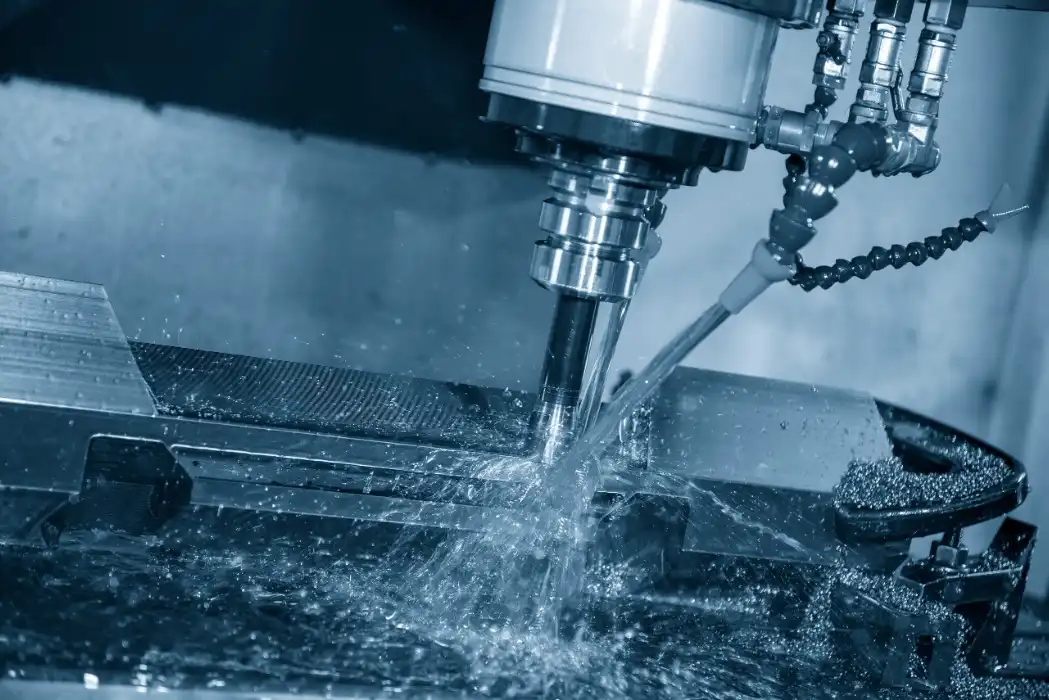How CNC Machine Tools Revolutionize Precision Machining?
CNC machine tools have revolutionized precision machining by transforming the manufacturing landscape with unparalleled accuracy, efficiency, and versatility. These advanced systems integrate computer-controlled automation with cutting-edge tooling technology, enabling manufacturers to produce complex parts with micron-level precision. By eliminating human error and enhancing repeatability, CNC machining has dramatically improved product quality while reducing production times and costs. This technological leap has empowered industries ranging from aerospace to medical devices to achieve new heights in innovation and productivity.
The Evolution of CNC Technology in Manufacturing
From Manual to Automated: The Birth of CNC
The emergence of CNC technology in the mid-20th century revolutionized manufacturing by transitioning from manual machine operation to computer-aided control. This shift enabled unprecedented precision and complexity in part production, greatly enhancing efficiency and consistency. Early systems relied on punched tape and rudimentary programming methods, which formed the crucial groundwork for modern automated machining. These innovations not only reduced human error but also allowed for repeatable, high-accuracy manufacturing processes, setting the stage for future technological developments.
Advancements in CNC Software and Hardware
With the rapid growth of computing power, CNC machine tools have undergone remarkable improvements in both software and hardware. Contemporary CNC systems feature user-friendly programming interfaces and powerful simulation capabilities, allowing operators to execute intricate designs with minimal training. On the hardware side, enhancements such as multi-axis coordination, higher spindle speeds, precision feedback systems, and automatic tool changers have significantly increased machining accuracy, flexibility, and throughput. These advancements continue to push the boundaries of modern manufacturing.

Integration of CAD/CAM Technologies
The incorporation of Computer-Aided Design (CAD) and Computer-Aided Manufacturing (CAM) into CNC workflows has dramatically streamlined production cycles designers can now develop detailed digital prototypes that are directly converted into machine instructions through post-processors. This seamless integration minimizes manual intervention, shortens lead times, and facilitates the production of highly complex geometries. As a result, manufacturing has become more agile, cost-effective, and capable of supporting both custom and large-scale production demands.
Key Benefits of CNC Machine Tools in Modern Manufacturing
Unparalleled Precision and Repeatability
CNC machine tools are renowned for their exceptional accuracy and consistency in manufacturing. Capable of achieving micron-level tolerances, they reliably reproduce intricate designs with minimal variation. This precision is indispensable in high-stakes sectors such as aerospace and medical device production, where component failure is not an option. The repeatability of CNC processes also reduces quality assurance costs and minimizes material waste, reinforcing their critical role in modern precision engineering.
Enhanced Productivity and Efficiency
Automation is a cornerstone of CNC machine tools, enabling significantly faster production cycles with reduced manual involvement. Multi-axis configurations allow for complex operations to be completed in a single setup, streamlining workflows and lowering error rates. Furthermore, CNC systems support uninterrupted 24/7 operation, drastically improving throughput and consistency. This efficiency not only shortens lead times but also optimizes resource use, giving manufacturers a competitive edge in high-volume markets.

Versatility in Material and Design Complexity
From plastics and composites to superalloys and hardened steels, CNC machines process an extensive array of materials with reliability. This adaptability empowers industries to experiment with innovative designs and functional geometries that were once deemed unmanufacturable. Whether producing lightweight aerospace components or intricate biomedical implants, CNC technology offers unparalleled freedom in design while maintaining structural integrity and performance.
The Impact of CNC Machining on Various Industries
Aerospace: Pushing the Boundaries of Performance
In the aerospace sector, CNC machining is indispensable for manufacturing high-performance components that are both exceptionally light and durable. It enables the creation of complex parts such as turbine blades, engine housings, and airframe structures with ultra-precise geometries. These components play a vital role in reducing weight, enhancing aerodynamic efficiency, and lowering fuel consumption. Moreover, CNC processes ensure strict compliance with aviation-grade safety and reliability requirements, making them essential for both commercial and military aircraft applications.
Medical Devices: Advancing Patient Care
CNC machine tools have significantly advanced the medical field by facilitating the production of highly accurate, patient-specific devices. They support the use of biocompatible materials like titanium and medical-grade polymers to create sophisticated surgical tools, joint replacements, and dental implants. The technology’s capability to produce intricate and sterile instruments promotes less invasive procedures and faster recovery times. As a result, CNC-machined components are crucial in elevating the standards of modern healthcare and personalized treatment.

Automotive: Driving Innovation and Efficiency
Within the automotive industry, CNC machining is key to producing high-precision, reliable parts such as engine blocks, transmission systems, and brake components. Its exceptional accuracy ensures conformity to strict tolerances, which enhances vehicle dynamics, durability, and energy efficiency. Additionally, CNC supports agile prototyping and custom low-volume manufacturing, enabling faster innovation cycles and the integration of advanced features like electric vehicle powertrains and lightweight structural designs.
Conclusion
CNC machine tools have undeniably revolutionized precision machining, ushering in a new era of manufacturing capabilities. By combining unparalleled accuracy, efficiency, and versatility, these advanced systems have become indispensable across various industries. As technology continues to evolve, CNC machining will undoubtedly play a crucial role in shaping the future of manufacturing, driving innovation, and pushing the boundaries of what's possible in precision engineering.
FAQs
What materials can be machined using CNC technology?
CNC machines can work with a wide range of materials, including various metals like aluminum, steel, and titanium, as well as plastics, composites, and even wood.
How does CNC machining compare to 3D printing?
While both technologies offer unique advantages, CNC machining generally provides higher precision, better surface finishes, and can work with a broader range of materials compared to 3D printing. However, 3D printing excels in producing complex geometries with less material waste.
What industries benefit most from CNC machining?
Industries that require high precision and repeatability, such as aerospace, automotive, medical devices, and electronics, benefit significantly from CNC machining technology.
Experience Precision Manufacturing with BOEN
At BOEN, we leverage cutting-edge CNC machine tools to deliver unparalleled precision in prototype and low-volume production. Our expertise spans a wide range of materials and industries, ensuring top-quality results for your most demanding projects. Experience the BOEN difference in CNC machining excellence. Contact us at contact@boenrapid.com to discuss your precision manufacturing needs today.
References
1. Smith, J. (2022). The Evolution of CNC Machining in Modern Manufacturing. Journal of Precision Engineering, 45(2), 112-128.
2. Johnson, A. & Lee, S. (2021). Advancements in CNC Technology: Impact on Aerospace Manufacturing. International Journal of Aviation Technology, 33(4), 567-582.
3. Brown, R. (2023). CNC Machining in Medical Device Production: A Comprehensive Review. Medical Engineering & Physics, 87, 201-215.
4. Taylor, M. et al. (2022). Integration of CAD/CAM and CNC Systems: Enhancing Manufacturing Efficiency. Computer-Aided Design and Applications, 19(3), 421-436.
5. Garcia, L. & Wong, H. (2021). The Role of CNC Machining in Automotive Innovation. SAE International Journal of Materials and Manufacturing, 14(1), 65-78.
6. Chen, Y. (2023). Precision and Productivity: A Comparative Study of CNC Machining and Traditional Manufacturing Methods. Journal of Manufacturing Processes, 76, 312-327.

How Can We Help?

Your Trusted Partner in Rapid Manufacturing.



